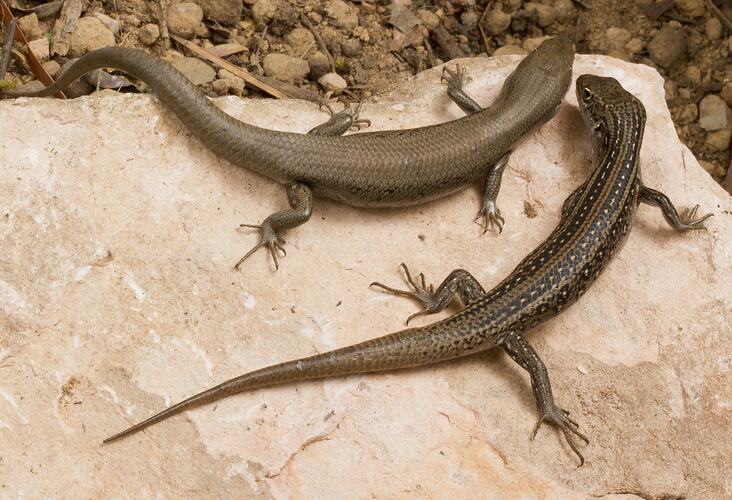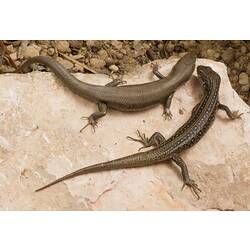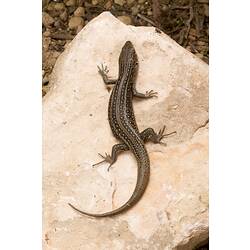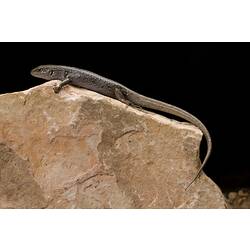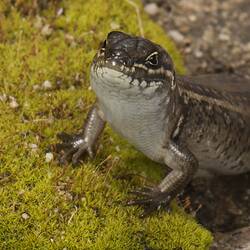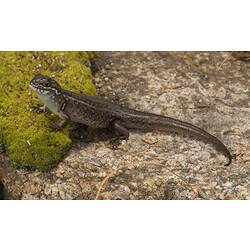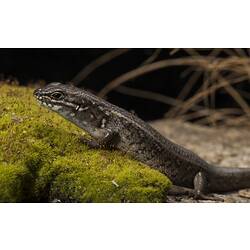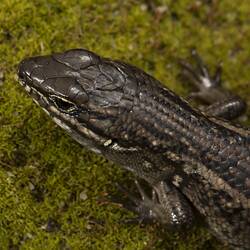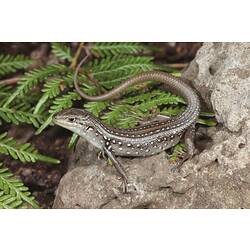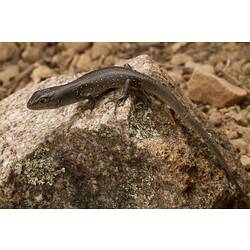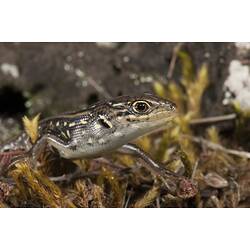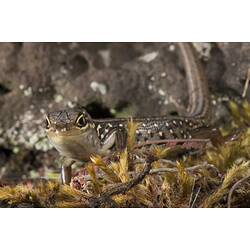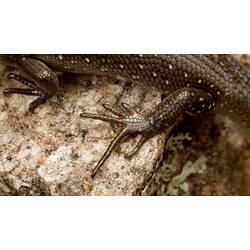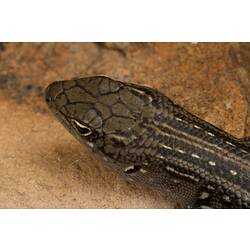General Description
Grey-brown skink with a red-brown flush towards the tail end. Some individuals are unpatterned above, others have two broad black stripes along the back with white or yellow spots in between. The sides are plain or mottled, with prominent black-edged pale spots. The under surface is white to light grey. On the head there is a pale streak running from above the mouth to the ear, passing under the eye. Snout to base of tail length up to 11 cm.
Biology
White's Skinks prefer rocky habitats with well-developed canopy cover. They are swift-moving and are active during the day. They can be found basking or foraging on rocky outcrops or sheltering in burrows under rock slabs or logs. If disturbed they quickly retreat. They feed on invertebrates. Females give birth to live young rather than laying eggs (i.e. they are viviparous). There are one to three offspring each brood.
Distribution
A wide geographic range in South Australia, Tasmania, Victoria, New South Wales and southern Queensland.
Habitat
Rocky microhabitats near rock outcrops in open woodland, dry forests, and coastal heathlands.
More Information
-
Animal Type
-
Animal SubType
-
Brief Id
A robust, medium-sized, rock-dwelling skink. Grey-brown and usually with spots and stripes on the back and pale spots on the side.
-
Colours
Grey, Brown, Black, White, Red
-
Maximum Size
11 cm
-
Habitats
-
Diet
Invertebrates
-
Diet Categories
Invertebrates
-
Endemicity
-
Commercial
No
-
Conservation Statuses
CITES: Not listed, FFG Threatened List: Not listed, EPBC Act 1999: Not listed, IUCN Red List: Least Concern
-
Taxon Name
-
Scientific Author
(Lacepède, 1804)
-
Common Name
White's Skink
-
Kingdom
-
Phylum
-
Subphylum
-
Class
-
Subclass
-
Order
-
Suborder
-
Infraorder
-
Family
-
Genus
-
Species Name
whitii
